OSIRIS-REx: A complete guide to the asteroid-sampling mission
OSIRIS-REx is an ongoing mission. It returned samples of asteroid Bennu to Earth on Sept. 24, 2023, and is now moving on to study asteroid Apophis in 2029.
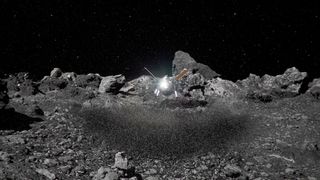
NASA's OSIRIS-REx is an ongoing mission that visited and collected a sample from asteroid 101955 Bennu and returned the sample to Earth on Sept. 24, 2023. The spacecraft is headed to a new target, the asteroid Apophis, which will also fly close to Earth in 2029.
OSIRIS-Rex launched on Sept. 8, 2016, and arrived at asteroid Bennu on Dec. 3, 2018. It began orbiting the carbon-rich rock on Dec. 31, 2018. A dramatic, yet brief, touchdown on Oct. 20, 2020, saw Bennu pick up a sample from the surface before beginning the long journey home on May 10, 2021.
OSIRIS-REx's sample return capsule brought a sample of Bennu back to Earth at 10:52 a.m. EDT (1452 GMT) on Sept. 24, 2023, but that will not be the end of the main spacecraft's mission. It will be retasked to swing by the near-Earth asteroid Apophis in 2029 with a new moniker: OSIRIS-REx-APEX
Related: Queen legend Brian May helped NASA ace its asteroid-sampling mission, new book reveals
OSIRIS-REx FAQs
Where is OSIRIS-REx now?
OSIRIS-REx delivered a sample of the near-Earth asteroid Bennue on Sept. 24, 2023. The spacecraft is now en route to near-Earth asteroid Apophis where it will arrive in 2029.
Has OSIRIS-REx returned to Earth?
OSIRIS-REx will not return to Earth. Instead, it delivered samples of asteroid Bennu on Sept. 24, 2023, and then continued its extended mission to study asteroid Apophis in 2029.
What is OSIRIS-REx and why is it important?
OSIRIS-REx is an ambitious asteroid-sampling mission. It launched on Sept. 8, 2016, and entered orbit around the near-Earth asteroid Bennu on Dec. 31. 2018 before a brief touchdown on Oct. 20, 2020, where it retrieved a sample from the surface of the asteroid. OSIRIS-REx then delivered the sample back to Earth on Sept. 24, 2023, before heading off on an extended mission to study asteroid Apophis.
OSIRIS-REx is important because it is the first U.S. mission to collect a sample from an asteroid. When the sample is returned to Earth it will help scientists learn more about how the early solar system formed and how life began. It could also help us to better understand asteroids that could potentially impact Earth in the future.
Was OSIRIS-REx a success?
OSIRIS-REx successfully collected a sample from near-Earth asteroid Bennu on Dec. 31, 2018, and returned the sample to Earth on Sept. 24, 2023.
How it started
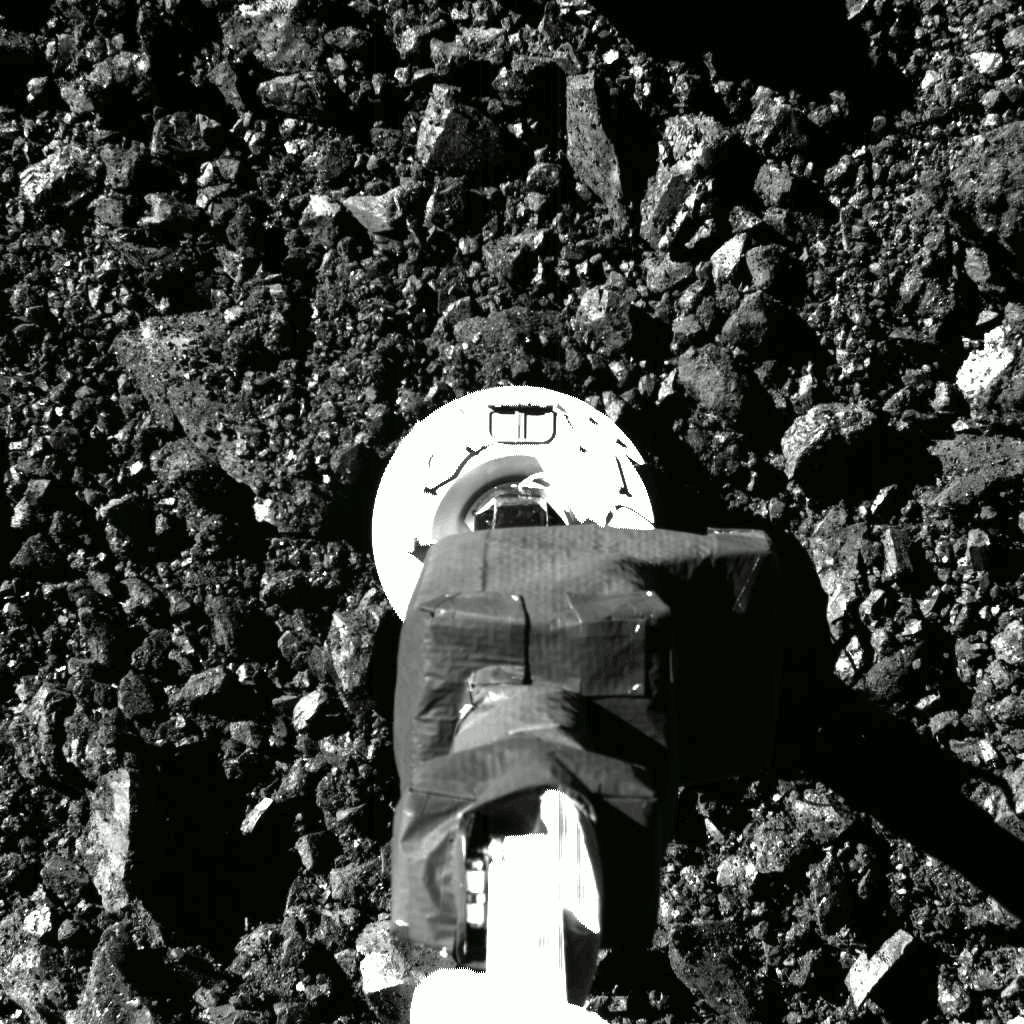
The $800-million OSIRIS-REx (Origins-Spectral Interpretation-Resource Identification-Security-Regolith Explorer) mission was named a finalist for NASA's New Frontiers mission class in 2009, along with missions to study Venus (Surface and Atmosphere Geochemical Explorer, or SAGE) and the moon (MoonRise). In 2011, OSIRIS-REx was chosen as the winning proposal.
The New Frontiers program consists of a series of medium-class spacecraft missions intended to help us better understand the solar system. OSIRIS-REx was the third mission chosen for that program; the previous selectees were New Horizons, which flew by the dwarf planet Pluto in 2015 and by an object called 2014 MU69 in 2019 and is continuing its mission out in the solar system, and the Juno mission, which arrived in orbit around Jupiter in 2016 and is still operational there.
OSIRIS-REx launched on Sept. 8, 2016. It briefly returned home in September 2017 to complete a speed-boosting flyby of Earth. The probe arrived at Bennu on Dec. 3, 2018. In the month after its arrival, OSIRIS-REx took detailed measurements of Bennu's shape and mass before precisely slipping into orbit.
The asteroid probe set two records: Bennu is the smallest body a spacecraft has ever orbited (the space rock has a diameter of 1,640 feet, or 500 meters), and OSIRIS-REx performed the closest orbit ever of a small body, at just 1 mile (1.6 kilometers) from the surface.
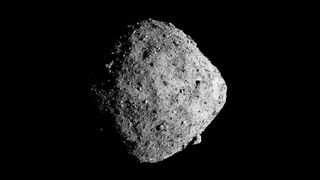
OSIRIS-REx instruments
The five instruments onboard the spacecraft studied, mapped and analyzed the asteroid in unprecedented detail:
- OSIRIS-REx Visible and Infrared Spectrometer (OVIRS) — By measuring visible and near-infrared light, OVIRS hunted for organics and other minerals.
- OSIRIS-REx Thermal Emission Spectrometer (OTES) — Using the thermal infrared, OTES took Bennu's temperature and mapped mineral and chemical abundances. Together, OVIRS and OTES mapped Bennu over a range of wavelengths to select the best site to sample the asteroid.
- OSIRIS-REx Camera Suite (OCAMS) — A three-camera suite to map Bennu. PolyCam, the largest, acquired the first images of Bennu, taking them from 1.2 million miles (2 million kilometers) out, and captured high-resolution images of the sample site. MapCam hunted for satellites and dust plumes around the asteroid, mapped it in color, and took photographs to create topographic maps. SamCam documented the collection of the sample and its capture.
- OSIRIS-REx Laser Altimeter (OLA) — By scanning the entire surface of Bennu, OLA will send back data to create highly accurate 3D models of the asteroid's surface. One of the two Canadian-built lasers failed during the primary mission, but it was working beyond its expected instrument lifetime and collected all the information required for OSIRIS-REx to land, investigators said at the time.
- Regolith X-ray Imaging Spectrometer (RExIS) — Studying X-ray emissions of Bennu was expected to help with the creation of a map showing the abundance of different elements on the surface. Unlike other imaging instruments, RExIS examined the composition of the asteroid at the level of individual atomic elements.
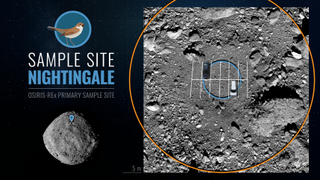
Mission timeline
The spacecraft made two deep-space maneuvers after launch. The first took place on Dec. 28, 2016, and set the spacecraft up for its gravity assist with Earth.
Almost a year later, OSIRIS-REx made a flyby of our home planet, on Sept. 22, 2017, to pick up speed for its journey to Bennu.At its closest approach to Earth, over Antarctica, the spacecraft was roughly 10,700 miles (17,200 km) from the surface. The flyby increased OSIRIS-REx's speed by about 8,500 mph (13,000 km/h) and was flawlessly executed. The spacecraft then continued on its journey to Bennu.
Along the way, the OSIRIS-REx snapped some stunning images of Earth and its moon from a distance of a little more than 3 million miles (5 million km).
On June 28, 2018, the spacecraft aced its second and final major deep-space maneuver before making a series of successful asteroid-approach operations to put it close to Bennu where it safely arrived on Dec. 3, 2018.
After the asteroid was studied in significant detail, scientists identified a region to sample, a rocky zone with the nickname of Nightingale. A flawless touchdown on Oct. 21, 2020, lasted just six seconds and brought the Touch-And-Go Sample Acquisition Mechanism (TAGSAM) into play.
As OSIRIS-REx drew closer to the asteroid, TAGSAM blasted a sample of pure nitrogen gas at the rock's surface. Regolith (dust and broken rock) blasted from the surface was pushed into the chamber of the sampler. OSIRIS-REx was tasked with collecting at least 2 ounces (60 g) of asteroid material, with a preference for 5 ounces (150 g) to account for any measurement errors. The spacecraft easily surpassed the primary goal of 2 ounces or 60 grams, NASA said after the attempt.
While the spacecraft collected enough on its first goal, OSIRIS-REx did carry three bottles of nitrogen gas to allow for multiple collection attempts. TAGSAM also was rated to carry as much as 70 ounces (2,000 g). (To weigh the sample in the low-gravity environment, scientists measured the angular acceleration of the spacecraft before and after the sample is collected.)
OSIRIS-REx finished its last flyover of Bennu on April 7, 2021, and departed for Earth on May 10 that year. The plan is for the sample capsule to return to Earth on Sept. 24, 2023, while the main spacecraft journeys on to Apophis for a 2029 rendezvous.
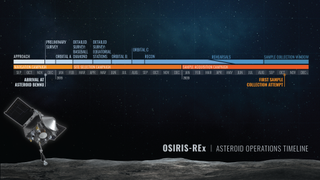
Why Bennu?
Originally known as 1999 RQ36, the rock OSIRIS-Rex visited was renamed Bennu by 9-year-old Mike Puzio in a 2013 contest. Bennu is an Egyptian god usually depicted as a gray heron. Puzio chose the name because he thought TAGSAM and the solar panels resembled the bird god's neck and wings.
Bennu is one of several thousand near-Earth objects orbiting within 120 million miles (190 million km) of Earth. Among those, Bennu was one of less than 200 objects whose orbit was well-known and sufficiently similar to Earth's orbit. This asteroid orbits the sun every 436 days and comes very close to Earth every six years.
Bennu's also relatively large, at about 1,650 feet (500 m) wide. Rocks smaller than 650 feet (200 m) spin too rapidly for a spacecraft to safely land on them. Only a handful of the asteroids in appropriate orbits were large enough to allow a visit.
Among those deemed appropriate, Bennu has a more-attractive composition. The asteroid is relatively rich in carbon-based material; the asteroids that may have brought water and organic material to Earth and helped kick off life would have looked like Bennu.
Bennu's close orbit also makes it a potentially hazardous object for Earth, and NASA now estimates the risk is quite low: the asteroid's total impact probability through 2300 is just 1 in 1,750. If the asteroid does collide with Earth, the impact won't destroy the planet, but it will wreak havoc wherever it touches down. Experts say that an asteroid of this size would likely devastate the local area around the impact, but it wouldn't cause mass extinctions.
Still, the advanced warning provided by OSIRIS-REx could help scientists take preventative measures long before an impact. One such method could be to redirect the asteroid entirely using the "kinetic impactor" technique as demonstrated by NASA's DART mission. On Sept. 26, 2022, DART (Double Asteroid Redirection Test) successfully slammed a spacecraft into a small asteroid called Dimorphos to alter its orbit. The mission was a roaring success and on Oct. 11, 2022, NASA officially announced that DART shortened Dimorphos' nearly 12-hour orbit by a whopping 32 minutes, smashing previous estimates.

Visiting Apophis
Apophis is another potentially hazardous asteroid that was recently removed from the Sentry Impact Risk Table which keeps track of asteroids where an Earth impact cannot be ruled out.
According to NASA, Apophis has been deemed to not be a problem for at least the next 100 years, based on improved simulations of its movements through space. On Friday, April 13, 2029, Earth will have a close encounter with the asteroid that will see the 1,120 feet (340-meter) wide object come just 19,000 miles (31,000 km) from the planet — closer than most geostationary satellites.
Previously, scientists calculated Apophis had a very small chance of hitting Earth during a flyby in 2068, but the reassessment of its risk in 2021 showed there is no threat whatsoever to worry about. But with the asteroid coming so close, having a healthy and untasked spacecraft available to swing by presented NASA with a unique moment.
NASA announced in April 2022 that it will redirect OSIRIS-REx to make the most of the encounter, and rename the spacecraft after it drops off Bennu samples at Earth. OSIRIS-APEX will be the new name of the mission in 2023 and it will reach Apophis in 2029.
The mission does take on some aging risk (as OSIRIS-Rex will be about 13 years old during the flyby) as well as the extra cost, as there will be another $200 million added bringing the total cost of $1 billion for a mission from Earth to Bennu to Apophis. That said, the cost is likely smaller than launching a separate, second spacecraft and dispenses with one of the riskiest phases of a new mission, which is blasting off the planet on a rocket.
Aside from one of the transmitters of OLA, the instruments on the spacecraft are healthy and that will allow the new OSIRIS-APEX mission to do its job. The spacecraft will examine Apophis for 18 months and aims to get close enough to examine the asteroid in great detail, including what lies beneath the surface. A special thruster maneuver will blast away the surface to reveal subsurface materials on Apophis
This will be especially helpful as Apophis and Bennu, despite being about the same size, are completely different asteroid types. Apophis shares the S-type family with ordinary chondrite meteorites, and Bennu is part of a family that potentially delivered water to Earth long ago (known as the B-type.)
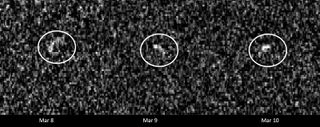
Asteroid sampling missions
Asteroids are the bits and pieces left over from the formation of the planets, and as such, they serve as rudimentary blueprints of the early solar system. Studying them allows scientists to see what the early solar system was like and to get a handle on how planets formed.
OSIRIS-REx follows a long line of asteroid missions, and while it is the first to return samples to the United States, Japan already has returned two other similar missions. Hayabusa became the first spacecraft to bring a bit of an asteroid back to Earth in 2010. A successor Japanese sample-return mission, called Hayabusa2, did the same with asteroid Ryugu in 2020.
NASA's Dawn mission, as another example, visited the asteroid Vesta before moving on to the dwarf planet Ceres. In contrast to the Dawn mission, however, OSIRIS-REx aims to bring home a piece of Bennu for in-depth laboratory studies that aren't possible from orbit. The OSIRIS-REx team aims to collect at least 2 ounces (60 grams) of material to achieve their scientific goals.
As a secondary objective, OSIRIS-REx's research is meant to provide further insight into potentially hazardous asteroid movements. (There's nothing to worry about yet, despite decades of searching the skies, but research remains ongoing.) Both Bennu and Apophis have designations as "potentially hazardous" asteroids, but it is more a statistical description than anything meant to cause alarm.
Related: Just how many threatening asteroids are there? It's complicated.
OSIRIS-REx will also help astronomers study the Yarkovsky effect on asteroids. This phenomenon occurs when heat from the sun provides a tiny push that alters the movement of an asteroid or other object. Although the push is minimal, it can build up over time, helping to change the path a space rock travels. But it can be challenging to study this effect, as it varies based on the shape of each asteroid.
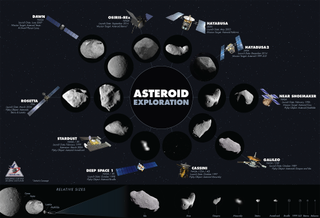
Further reading
Read NASA's overview of the OSIRIS-REx mission. Learn more about the OSIRIS-REx mission from Lockheed Martin. Check out this collection of OSIRIS-REx photo galleries from the University of Arizona.
References
Arizona Board of Regents. (2022.) OSIRIS-Rex: Asteroid Sample Return Mission - Galleries. Accessed Nov. 10, 2022 from: https://www.asteroidmission.org/galleries/
Lockheed Martin. (2022.) OSIRIS-REx: Discovering the Origins of the Solar System. Accessed Nov. 10, 2022 from https://www.lockheedmartin.com/en-us/products/osiris-rex.html
NASA. (2020, Oct. 23.) NASA’s OSIRIS-REx spacecraft collects significant amount of asteroid. Accessed Nov. 10, 2022 from: https://www.nasa.gov/press-release/nasa-s-osiris-rex-spacecraft-collects-significant-amount-of-asteroid
NASA Science. (n.d.) OSIRIS-REx. Accessed Nov. 10, 2022 from: https://solarsystem.nasa.gov/missions/osiris-rex/in-depth/
Join our Space Forums to keep talking space on the latest missions, night sky and more! And if you have a news tip, correction or comment, let us know at: community@space.com.
Get the Space.com Newsletter
Breaking space news, the latest updates on rocket launches, skywatching events and more!

Nola Taylor Tillman is a contributing writer for Space.com. She loves all things space and astronomy-related, and enjoys the opportunity to learn more. She has a Bachelor’s degree in English and Astrophysics from Agnes Scott college and served as an intern at Sky & Telescope magazine. In her free time, she homeschools her four children. Follow her on Twitter at @NolaTRedd
- Elizabeth HowellStaff Writer, Spaceflight
- Daisy DobrijevicReference Editor
